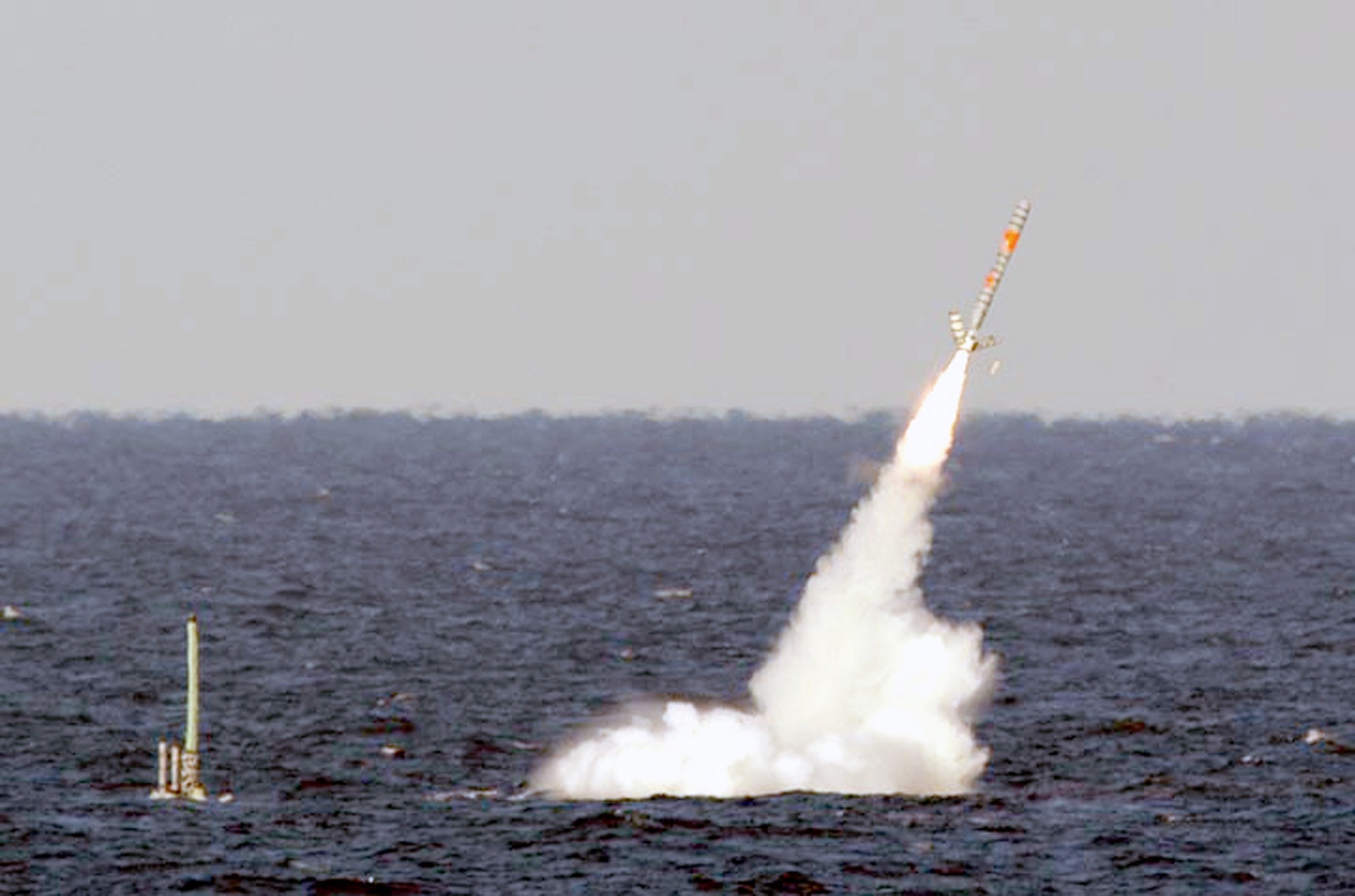In response to a growing threat from China and North Korea, Japan is set to receive lethal ship-launched Tomahawk missiles. The first missile will be installed on the Kongo-class guided missile destroyer Aegis Chokai.
The Japanese Ministry of Defense (MoD) intends to outfit the Aegis destroyer Chokai of the Maritime Self-Defense Force (MSDF) with the capability of firing American-made Tomahawk cruise missiles, Japan Times reported, citing some unknown sources.
For this plan to be implemented, the ministry has requested ¥1.8 billion ($12.3 million) from the government’s fiscal 2025 budget. This would make the Chokai destroyer, deployed at the MSDF’s Sasebo base in Nagasaki Prefecture, the first ever Japanese Maritime Self Defense Force (JMSDF) vessel with the much sought-after counterstrike capability.
“The Chokai will be the first Aegis destroyer to undergo refurbishment (for the addition of a Tomahawk launch function) in light of the timing of routine maintenance,” an anonymous ministry official said.
According to the report, Chokai’s refurbishment is anticipated to be completed in March 2026. However, EurAsian Times could not independently verify these reports.

Chokai is a Kongo-class guided missile destroyer and one of the eight Aegis destroyers in the Japanese inventory. Japan’s eight Aegis destroyers—two Kongo class, two Atago class, two Maya class, and the two new destroyers that will be put into service in 2027 and 2028—will all have Tomahawks installed on them.
Sources said that following the refurbishment of the Chokai, it might test a Tomahawk launch in the United States. The ministry plans to gradually refurbish all eight Aegis destroyers that are stationed at the MSDF’s bases in Sasebo, Kanagawa Prefecture, and Yokosuka, Kanagawa Prefecture.
Though unconfirmed, the most recent reports coincide with heightened hostilities with China. On August 31, for instance, a Chinese naval survey vessel entered Japanese waters. Tokyo has vigorously protested the “intrusion” after the ship was spotted off the coast of Kagoshima Prefecture in southwest Japan.
China, however, has stoked tensions by defending its navy survey ship’s weekend intrusion into Japanese territorial seas close to its southwest islands. On September 2, China said the journey was “completely legitimate” and that the ship was using its rights of passage.
China says it’s still “investigating and verifying” the recent violation of Japan’s airspace by one of its surveillance planes. But with a Chinese survey ship sailing into Japanese waters only the other day, two territorial incursions in less than a week looks more intentional… pic.twitter.com/44CDhC4M2u
— ラーム・エマニュエル駐日米国大使 (@USAmbJapan) September 3, 2024
Japan has repeatedly raised concerns regarding the increase in Chinese military operations in the vicinity of Japan and Taiwan in recent years, cautioning that this situation may escalate, given Japan’s close geographical relationship with the self-governing island of Taiwan.
In fact, Japan is bolstering its long-range strike capability to deter regional adversaries like China and North Korea. The acquisition of Tomahawk missiles corresponds with the government’s National Security Strategy, which calls for counter-strike capabilities.
The Japanese government announced the purchase of 400 Tomahawk missiles in January 2024. The purchase agreement includes 200 Block IV Tomahawks, 200 Block V Tomahawks, 14 Tactical Tomahawk Weapon Control Systems, support, training, maintenance, spares, and other peripheral services.
This is the first time in several decades that Japan is developing offensive capabilities; however, it argues that this can be justified as a form of self-defense, asserting that the ability to strike enemy bases is allowed under the Constitution. The Japanese Defense Minister has advanced the purchase by a whole year, which is believed to be part of an effort to enhance its defense capabilities to deter China and North Korea.
Earlier this year, the US Navy commenced training sessions for Japan’s Self-Defense Forces (JSDF) on handling Tomahawk cruise missiles. With longer-range rockets at its disposal, Japan aims to potentially target areas across North Korea and parts of eastern and northeastern China from its territorial waters.
Tomahawk Cruise Missile
Developed in the 1970s to address the difficulties of contemporary combat, the Tomahawk is a crucial part of military planning for the US and its allies. The Tomahawk missile has significantly influenced modern warfare due to its precision and extended range in strike capabilities.
The missile has undergone continuous upgrades over the years to enhance its lethality. More than a dozen versions have been unveiled since its debut, with an eye on enhancing accuracy, range, and versatility.
The operational strength of the Tomahawk is derived from its capability to hit targets accurately at long ranges (up to 900 nautical miles) and its ability to hover over targets like unmanned aerial vehicles (UAVs).

Precision-guided munitions, such as Tomahawk missiles, can strike targets with remarkable accuracy, even within heavily contested airspace. These missiles are deployed from naval vessels and submarines and have an operational range of up to 1,000 miles.
Tomahawk cruise missiles can inflict significant damage, destroying structures and creating explosive craters up to 20 feet in width. Their ability to transport a standard warhead, weighing approximately 1,000 pounds, makes them a formidable weapon. These missiles are difficult to detect, allowing them to penetrate deep into hostile territory.
The Block IV version features an integrated datalink that enables target switching during flight and allows it to hover for an extended period. On the other hand, the Block V variant incorporates advanced technological innovations that allow the weapon to engage moving maritime targets while airborne, maintaining a low altitude that evades detection by adversaries’ radar systems.
The Tomahawk will likely act as a “bridge” for the Japan Self-Defense Forces (JSDF) until domestically produced missiles are operational. The locally-developed Type 12 Surface-to-Ship Missile will be used by the MoD as a stand-off missile.
- Contact the author at sakshi.tiwari9555 (at) gmail.com
- Follow EurAsian Times on Google News




